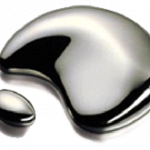
Each global region has different mechanisms and timelines to progress the phase-out of mercury based chlor-alkali technology. This page describes the regional status and options for storage and disposal of mercury. The page will be updated as more regional information becomes available.
PLEASE NOTE -Whilst the information on the potential options is listed, this should not be read as an endorsement of any one particular option and no ranking is implied.
At present, there are several companies active in the conversion of mercury to mercury-sulfide. Whilst we try to be as complete as possible, if additional information appear, we will update this list. Information given is directly from suppliers and no World Chlorine Council responsibility should be assumed.
Nomura Kohsan, Japan: Nomura Kohsan has developed an option to convert mercury into mercury sulphide with the HgS powder being solidified with cement and resin.
Information can be found on the http://nkcl.jp/research/ website.
Remondis QR in Dorsten, Germany: The installation has a capacity of approx. 800 tonnes/year. The liquid mercury is converted in a dry process to mercury sulphide.The mercury-sulphide is packed in drums and disposed of in the salt mine of K+S in Herfa Neurode, Germany. The process has been operational since 2014.
Information can be found on the Remondis QR Website.
BATREC in Wimmis, Switzerland: BATREC is under the management of SARP Industries within the Veolia Group. The installation consists of two parallel reactors and a filter-press and has a capacity of approx. 1200 tonnes/y. BATREC has two tonne containers available for the transport of the mercury waste from the electrolysis to their plant in Switzerland. For this transportation, special arrangements have to be agreed with the authorities. The process works in a wet environment resulting in a mercury-sulphide cake with less than 5% water. A conversion rate of 99.999% of the mercury to mercury-sulphide is guaranteed. The mercury sulphide is packed in plastic bags which then go into 200 liter drums. The mercury sulphide drums are stored in the salt mines of K+S in Herfa Neurode, Germany. The process has been operational since 2016.
Information can be found on the BATREC website.
ECON Industries: ECON is constructing a mobile unit which is able to convert approx. six tonnes of mercury per day (three shifts) to mercury sulphide. It is a dry process. The installation is operated on the premises of the electrolysis plant by the operators of the electrolysis plant. The company has to arrange the environmental permits and has to take care of the required utilities and operators. First pilot plant tests were successful and first commercial operation is expected in Q1-2017.
Information can be found on the ECON website.
MAYASA Spain: Mayasa is constructing a mercury stabilisation & solidification plant with a capacity of 300 ton mercury per year. It is expected that the plant will be operational at the end of 2018. Mayasa has a metallic mercury storage capacity of 2,400 ton.
Information can be found on the Mayasa website.